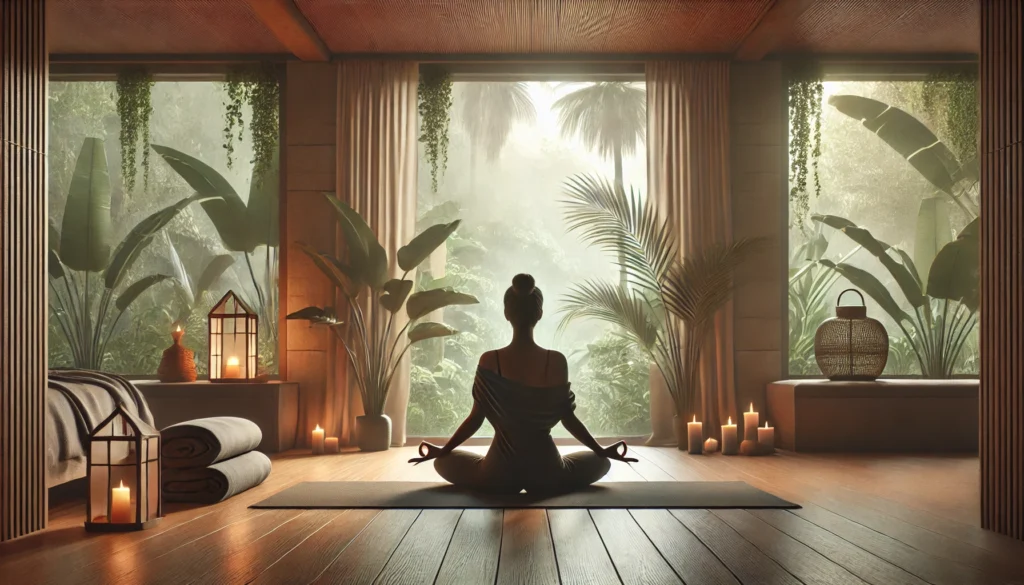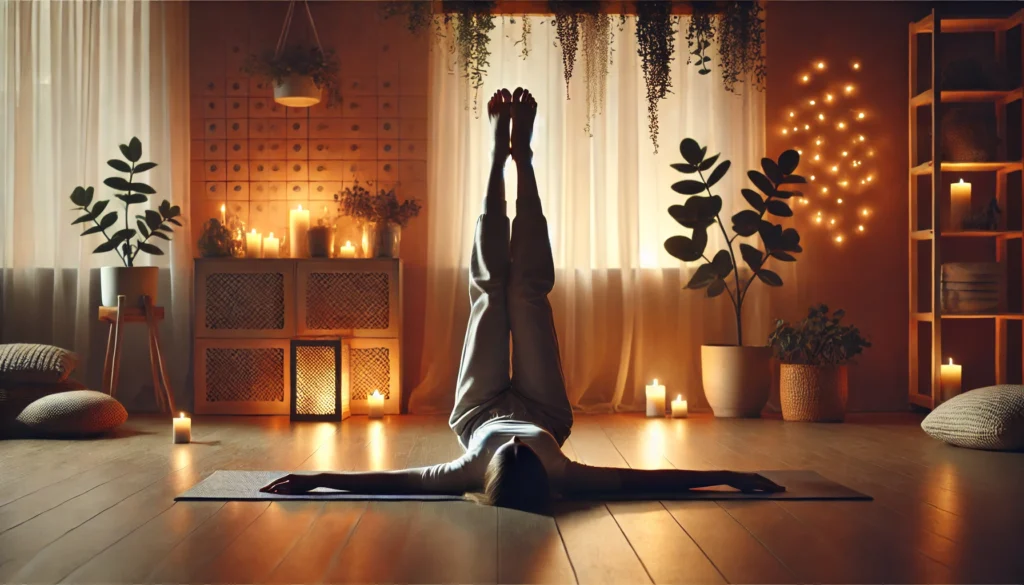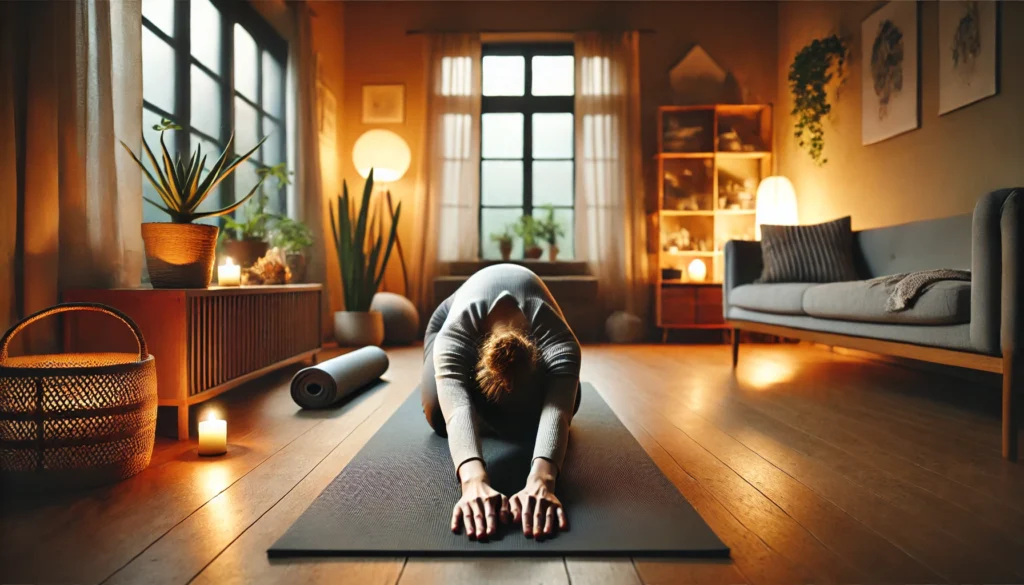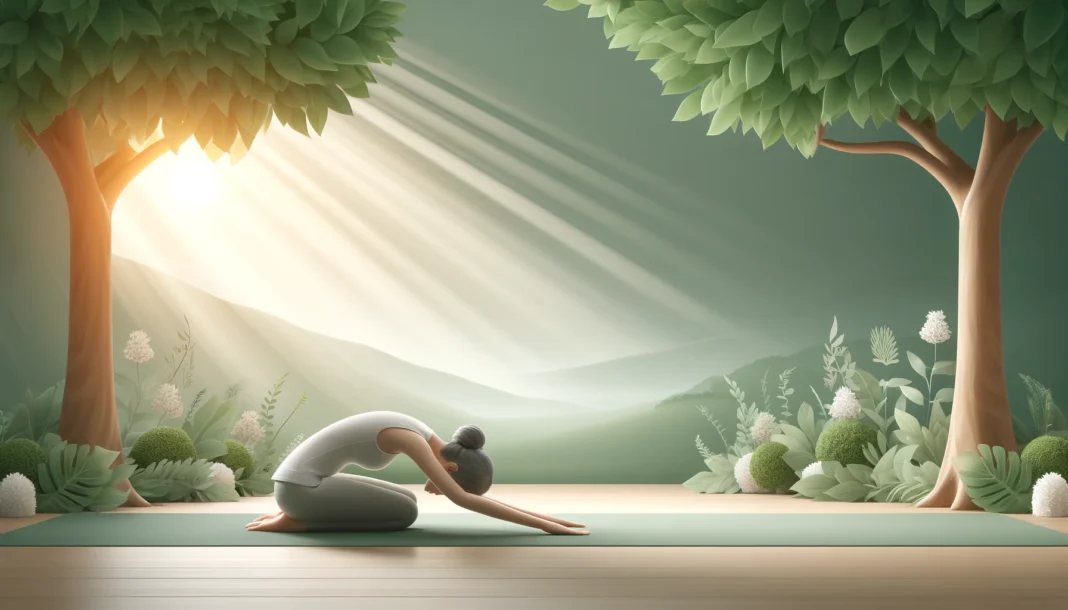Understanding the Importance of Relaxation in Yoga
Yoga is not merely an exercise practice; it is a holistic system designed to integrate the mind, body, and spirit. At its core, yoga emphasizes relaxation, mindfulness, and balance. Modern life is often dominated by stress, mental fatigue, and constant sensory stimulation, all of which contribute to physical tension and emotional distress. Yoga asanas for relaxation provide a vital counterbalance to these stressors, allowing individuals to reconnect with their inner sense of calm and restore the nervous system.
The benefits of practicing resting yoga poses extend beyond temporary relief. Engaging in yoga asanas for relaxation on a regular basis has been scientifically shown to lower cortisol levels, improve heart rate variability, and enhance the body’s ability to cope with stress. Through gentle movement, supported postures, and mindful breathing, yoga fosters a deep state of relaxation that is essential for overall well-being. These practices activate the parasympathetic nervous system, which counteracts the body’s fight-or-flight response and promotes restful awareness.
You May Also Like: Yoga for Stress Relief: Best Poses to Calm Anxiety and Restore Balance
The Science Behind Resting Yoga Poses and Stress Reduction
Scientific research has established a strong link between yoga and relaxation. When individuals engage in relaxing postures in yoga, the nervous system undergoes a physiological shift from a state of high alertness to one of calm receptivity. This shift is crucial for reducing symptoms of anxiety, improving sleep quality, and alleviating muscle tension. The deliberate movements and stillness in yoga promote an internal environment conducive to relaxation by slowing the breath, calming the heart rate, and increasing oxygenation of the brain.
Moreover, studies suggest that certain yoga asanas stimulate the vagus nerve, a crucial component of the parasympathetic nervous system. The vagus nerve plays a significant role in regulating emotions, reducing inflammation, and balancing the autonomic nervous system. When individuals engage in resting yoga poses, they stimulate this nerve, leading to a profound sense of relaxation and inner peace. This connection underscores the therapeutic potential of yoga for individuals experiencing chronic stress and fatigue.

Yoga Asanas for Relaxation: Foundational Poses for Deep Rest
Child’s Pose (Balasana)
Child’s Pose is one of the most effective yoga asanas for relaxation, allowing the body to surrender to gravity while gently stretching the lower back and hips. This posture encourages deep diaphragmatic breathing, which further enhances relaxation. By resting the forehead on the mat or a support, individuals stimulate pressure points that promote a calming effect on the brain. Child’s Pose is particularly useful for those who struggle with anxiety or racing thoughts, as it helps ground the mind and body in the present moment.
Legs-Up-the-Wall Pose (Viparita Karani)
Legs-Up-the-Wall Pose is a restorative inversion that facilitates venous return, reduces swelling in the legs, and promotes circulation throughout the body. This relaxing posture in yoga is especially beneficial for individuals who experience fatigue, as it gently reverses the effects of gravity. By elevating the legs, practitioners encourage lymphatic drainage, which supports the immune system while fostering deep relaxation. This posture is ideal for individuals looking to release tension and promote restful awareness.
Supine Butterfly Pose (Supta Baddha Konasana)
This deeply restorative posture involves reclining with the soles of the feet together and the knees relaxed outward. Supine Butterfly Pose encourages hip opening and the release of stored tension in the groin and lower back. The supported nature of this pose makes it an excellent addition to any yoga practice focused on relaxation. Incorporating slow, steady breathing in this pose amplifies its stress-relieving effects, making it an essential component of a calming yoga practice.
Reclining Twist (Supta Matsyendrasana)
The Reclining Twist is a gentle spinal rotation that helps release muscular tightness in the back while stimulating the digestive organs. This posture enhances circulation and promotes detoxification while encouraging deep relaxation. Twisting postures in yoga facilitate the removal of tension stored in the spine and shoulders, which are common areas affected by stress. As a relaxing posture in yoga, the Reclining Twist helps restore balance to the nervous system and encourages a sense of surrender.

The Role of Breath in Enhancing Relaxation
Breath control, or pranayama, is an essential element of yoga that significantly enhances the relaxation response. When practiced alongside resting yoga poses, deep and controlled breathing amplifies the calming effects of yoga. Techniques such as diaphragmatic breathing, alternate nostril breathing (Nadi Shodhana), and extended exhalation breathing help activate the parasympathetic nervous system, promoting deeper relaxation.
The slow, deliberate breathwork practiced in yoga asanas for relaxation allows the brain to shift into a more meditative state. This shift not only reduces stress but also fosters mental clarity and emotional balance. Engaging in breath-focused yoga practices helps individuals cultivate mindfulness, which further strengthens their ability to manage stress effectively.
Creating a Consistent Relaxation Routine with Yoga
Incorporating yoga into a daily relaxation routine can yield significant long-term benefits. Regularly practicing resting yoga poses ensures that the body and mind develop resilience against stressors. A well-rounded relaxation routine should include gentle movement, breathwork, and stillness.
To maximize the effectiveness of yoga for relaxation, individuals should practice in a quiet, comfortable environment with minimal distractions. Using props such as bolsters, blankets, and eye pillows can further enhance the restorative nature of the practice. Additionally, setting aside time for a dedicated relaxation session—whether in the morning, after work, or before bedtime—can establish a consistent habit that supports overall well-being.

Frequently Asked Questions (FAQ) on Yoga Asanas for Relaxation
1. How do yoga asanas for relaxation differ from other types of yoga?
Unlike dynamic or physically demanding forms of yoga, yoga asanas for relaxation focus on slow movements, deep breathing, and sustained postures to promote a calming effect on the nervous system. Restorative and gentle yoga styles emphasize resting yoga poses that allow muscles to fully relax while supporting the body with props like blankets or bolsters. These postures are designed to activate the parasympathetic nervous system, reducing stress and fostering a sense of deep inner peace. Unlike high-intensity yoga, which builds strength and flexibility, relaxation-based yoga primarily enhances emotional balance and mental clarity. By practicing a relaxing posture in yoga, individuals can achieve long-term benefits in stress reduction and overall well-being.
2. What is the best time of day to practice yoga asanas for relaxation?
The ideal time to practice yoga asanas for relaxation depends on individual needs and lifestyle factors. Many people find evening sessions most beneficial, as resting yoga poses help the body unwind and prepare for restful sleep. However, morning practice can be useful for setting a calm and focused tone for the day ahead. Midday relaxation sessions may help counteract work-related stress and improve concentration. The key is to create a consistent schedule that allows for uninterrupted practice and maximizes the calming effects of relaxing postures in yoga.
3. How do resting yoga poses impact long-term stress resilience?
Regular engagement in resting yoga poses strengthens the body’s ability to cope with stress by improving autonomic nervous system regulation. The repeated activation of the parasympathetic nervous system through deep breathing and passive stretching trains the body to respond to stress with greater ease. Over time, practicing a relaxing posture in yoga rewires the brain’s stress response, making individuals more emotionally resilient. Additionally, yoga enhances vagal tone, which plays a crucial role in emotional stability and physiological relaxation. These long-term adaptations make yoga asanas for relaxation an essential tool for maintaining mental and physical health.
4. Can yoga asanas for relaxation improve financial decision-making?
Surprisingly, yoga asanas for relaxation can have a significant impact on financial decision-making by enhancing clarity, focus, and emotional control. Stress often leads to impulsive financial choices, but practicing resting yoga poses encourages mindfulness, allowing for more thoughtful budgeting and investment decisions. A relaxed mind is better equipped to assess risks and prioritize long-term financial goals. Furthermore, reducing stress through a relaxing posture in yoga decreases anxiety-driven spending habits. By cultivating inner calm, individuals can develop better financial discipline and decision-making skills.
5. How do yoga asanas for relaxation support cardiovascular health?
Engaging in resting yoga poses has been shown to lower heart rate and blood pressure, reducing the risk of cardiovascular disease. The slow, deep breathing associated with a relaxing posture in yoga improves oxygenation and enhances circulation, reducing strain on the heart. Additionally, yoga’s ability to lower cortisol levels minimizes inflammation, which is a significant contributor to heart disease. Long-term practice of yoga asanas for relaxation fosters improved heart rate variability, a marker of cardiovascular resilience. This makes yoga a valuable, non-invasive way to support long-term heart health.
6. Are there specific resting yoga poses that help with digestion?
Yes, several resting yoga poses specifically target digestion by promoting healthy gut function and reducing bloating. Reclining Twist (Supta Matsyendrasana) stimulates the digestive organs and enhances nutrient absorption. Legs-Up-the-Wall Pose (Viparita Karani) improves circulation in the abdominal region, relieving discomfort from indigestion. Child’s Pose (Balasana) gently massages the stomach and helps reduce bloating caused by stress-related digestive issues. Practicing a relaxing posture in yoga after meals can encourage better digestion and prevent gastrointestinal discomfort. These poses offer a natural, non-invasive way to support gut health.
7. How does a relaxing posture in yoga affect sleep quality?
Practicing a relaxing posture in yoga before bedtime prepares the body for restful sleep by lowering cortisol levels and calming the nervous system. Restorative postures, such as Supine Butterfly Pose and Legs-Up-the-Wall, help release physical tension and promote mental relaxation. Breath-focused yoga asanas for relaxation slow the heart rate, making it easier to transition into deep sleep. Additionally, regular engagement in resting yoga poses reduces nighttime awakenings and improves overall sleep duration. These benefits make yoga an effective, drug-free solution for managing insomnia and sleep disturbances.
8. Can yoga asanas for relaxation help with workplace productivity?
Yes, practicing yoga asanas for relaxation can improve workplace productivity by enhancing focus, reducing stress, and preventing burnout. Stress-related fatigue often leads to decreased efficiency, but engaging in resting yoga poses during breaks can restore energy levels and improve mental clarity. Seated forward bends and gentle twists relieve muscular tension caused by prolonged sitting, improving posture and preventing discomfort. Additionally, breathwork associated with a relaxing posture in yoga enhances cognitive function, making it easier to concentrate on tasks. Many companies now encourage employees to integrate short yoga sessions into their daily routines to enhance overall workplace performance.
9. How can beginners incorporate relaxing postures in yoga into daily life?
Beginners can easily integrate relaxing postures in yoga into their routines by starting with simple poses such as Child’s Pose, Legs-Up-the-Wall, and Reclining Twist. Setting aside just 10–15 minutes per day to engage in yoga asanas for relaxation can provide noticeable stress relief. Using props such as blankets or yoga blocks enhances the effectiveness of resting yoga poses, making them more accessible. Practicing deep breathing alongside these postures amplifies relaxation benefits. Gradually incorporating more advanced relaxation techniques, such as guided meditation or extended Savasana, can deepen the practice over time.
10. What are the long-term psychological benefits of yoga asanas for relaxation?
Consistent practice of yoga asanas for relaxation fosters emotional resilience, enhances mood stability, and reduces symptoms of anxiety and depression. The meditative aspects of a relaxing posture in yoga promote self-awareness and mindfulness, leading to greater emotional control. Additionally, engaging in resting yoga poses helps regulate neurotransmitter activity, increasing levels of serotonin and dopamine, which contribute to a positive mental state. Over time, yoga practitioners develop a stronger mind-body connection, which enhances self-confidence and overall well-being. These psychological benefits make yoga a powerful tool for long-term mental health and emotional balance.
Final Thoughts
Yoga asanas for relaxation provide a natural and accessible means of reducing stress, calming the mind, and restoring balance to the body. Scientific evidence supports the effectiveness of resting yoga poses in promoting a state of deep relaxation and enhancing overall mental and physical health. By integrating breath control, mindfulness, and gentle movement, yoga offers a comprehensive approach to relaxation that is both therapeutic and sustainable.
For individuals seeking relief from the pressures of daily life, engaging in relaxing postures in yoga serves as a valuable tool for cultivating inner peace and emotional stability. Whether practiced at home or in a guided class setting, yoga’s ability to foster relaxation makes it an indispensable practice for those looking to soothe the body and mind.
yoga asanas for relaxation, resting yoga poses, relaxing posture in yoga, calming yoga poses, deep relaxation yoga, stress relief through yoga, restorative yoga postures, mindfulness and yoga, breathwork and relaxation, yoga for emotional balance
Further Reading:
Reducing Stress with Yoga: A Systematic Review Based on Multimodal Biosignals
The Effect of Yoga on Stress, Anxiety, and Depression in Women
Health Impacts of Yoga and Pranayama: A State-of-the-Art Review

